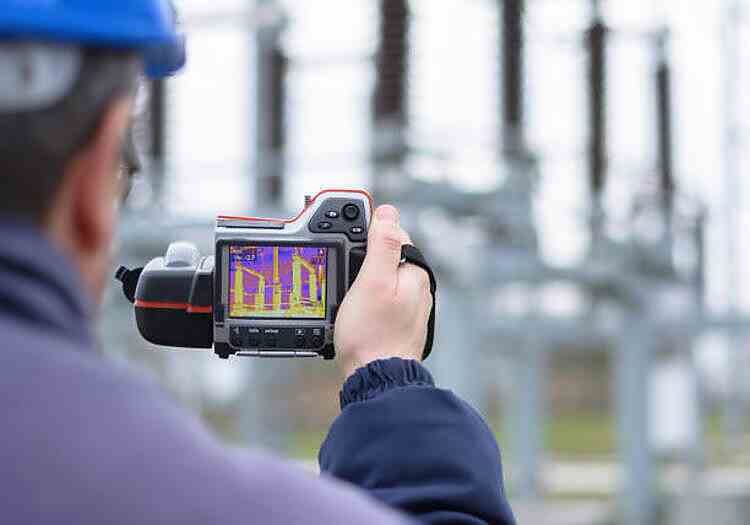Table of Contents
- Introduction to Temperature Sensors
- How Temperature Sensors Work
- Everyday Uses of Temperature Sensors
- Industrial Applications
- The Future of Temperature Sensor Technology
- Common Questions about Temperature Sensors
- Conclusion

Introduction to Temperature Sensors
These sensors, present across various devices and industries, are indispensable for maintaining optimal conditions, whether in our daily household gadgets or complex industrial processes. They are the backbone for systems that demand accurate temperature measurement and control, vital in safety, efficiency, and innovation.
Recognizing the widespread applications of temperature sensors is essential for tech enthusiasts and anyone keen on understanding the inner workings of everyday equipment. Notably, temperature regulation is a cornerstone for numerous processes, ensuring that human comfort and industrial productivity are maximized, all while conserving resources and minimizing waste.
How Temperature Sensors Work
Temperature sensors detect thermal energy levels and convert them into a readable output. This process is accomplished through various sensors designed for specific applications and environments. The most prevalent types include thermocouples, resistance temperature detectors (RTDs), and thermistors. Thermocouples, composed of two metals joined together at one end, generate a voltage corresponding to temperature differentials, making them ideal for high-temperature industrial uses. In today’s world, where precision and efficiency are at the forefront of technological advancement, the temperature sensor is a crucial yet often overlooked component.
On the other hand, RTDs utilize the resistance change in metals like platinum to provide accurate temperature readings, rendering them suitable for applications requiring high precision, such as laboratory experiments. Meanwhile, thermistors, made from semiconductor materials, offer rapid response times and are commonly found in electronic gadgets where quick thermal feedback is necessary. These distinct characteristics enable temperature sensors to cater to diverse needs and scenarios.
Everyday Uses of Temperature Sensors
Home Appliances
In the realm of home appliances, temperature sensors function as unsung heroes. They ensure refrigerators maintain the proper chill to keep food fresh and safe and that ovens provide consistent heat to bake your favorite pastries. The sensors adjust and maintain precise temperature settings, thereby conserving energy and prolonging the life of these appliances. Beyond appliances, a temperature and humidity monitor can provide insights into the overall climate of your home, helping you optimize comfort and prevent issues like mold growth.
Smart Devices
Integrating temperature sensors in smart devices takes home automation to the next level. Smart thermostats, for example, use integrated sensing technology to learn your routine and optimize heating or cooling with remarkable efficiency. This not only enhances comfort but also significantly reduces energy bills. Additionally, wearable devices like fitness trackers employ these sensors to monitor your body temperature, offering insights into your overall health and alerting you to potential issues.
Industrial Applications
Manufacturing
In manufacturing, temperature sensors are crucial for ensuring safety and efficiency. They monitor machinery temperatures, preventing overheating and potential hazards. Accurate temperature control is vital in many production processes, impacting the quality and consistency of products. Without these sensors, industries would face higher risks of machinery failure and decreased operational efficacy, leading to substantial financial losses.
Automotive
Temperature sensors in vehicles play a pivotal role in maintaining engine health. By keeping track of engine temperatures, these sensors help prevent overheating and associated damages, enhancing the vehicle’s longevity and performance. Furthermore, they improve fuel efficiency by optimizing engine operations, reducing emissions, and helping meet newer environmental standards.
Healthcare
The healthcare industry benefits tremendously from the meticulous application of temperature sensors. Whether monitoring a patient’s vital signs or ensuring the proper functioning of medical devices, temperature sensors provide the accuracy and reliability needed in critical healthcare settings. Adequate hospital temperature monitoring can be life-saving, particularly for surgeries and intensive care units.
The Future of Temperature Sensor Technology
As technology continues to evolve, so does the potential of temperature sensors. The advent of flexible sensors promises innovations in wearable and implantable medical devices, offering unprecedented levels of comfort and data accuracy. Furthermore, enhanced IoT integration facilitates real-time data collection and analysis, making systems more innovative and responsive. This evolution is likely to bring about new applications in environmental monitoring, personalized healthcare, and even more energy-efficient smart homes.
Common Questions about Temperature Sensors
- What are the different types of temperature sensors? Thermocouples, RTDs, and thermistors are common types tailored for varied applications.
- How are they maintained and calibrated? Regular maintenance and calibration are crucial to ensure accuracy and reliability, often involving comparison with standard temperature readings.
- Can temperature sensors be used in extreme environments? Specific sensors are designed to withstand extremely high and low temperatures, ensuring functionality in challenging conditions.
Conclusion
In summary, temperature sensors are indispensable in our interconnected world. Their ability to provide accurate and reliable temperature measurements makes them crucial across various domains, from household gadgets and innovative technology to industrial applications and healthcare. As advancements in sensor technology continue to unfold, we can anticipate even more creative uses and benefits, making our lives safer and more efficient every day.


